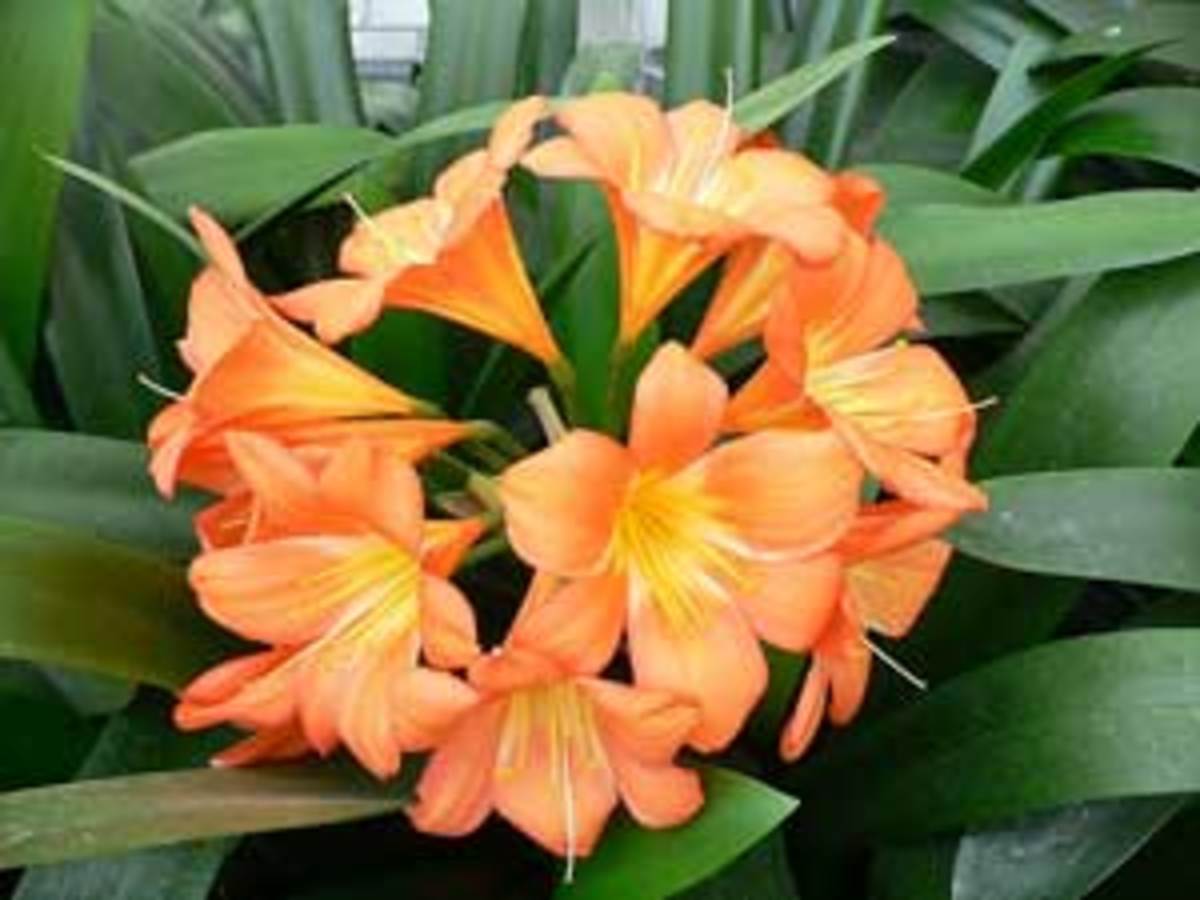
Clivia Miniata Horticulture
Clivia Miniata. Botanical Name: Clivia miniata A summer flower out in the garden, Clivia can be forced into bloom indoors in late winter or early spring. This member of the amaryllis family (Amaryllidaceae) bears clusters of 10-15 trumpet-shaped flowers above a thick, upright stem. Bright orange flowers with yellow centers are the most common; however, sometimes you can find rare peach, yellow.
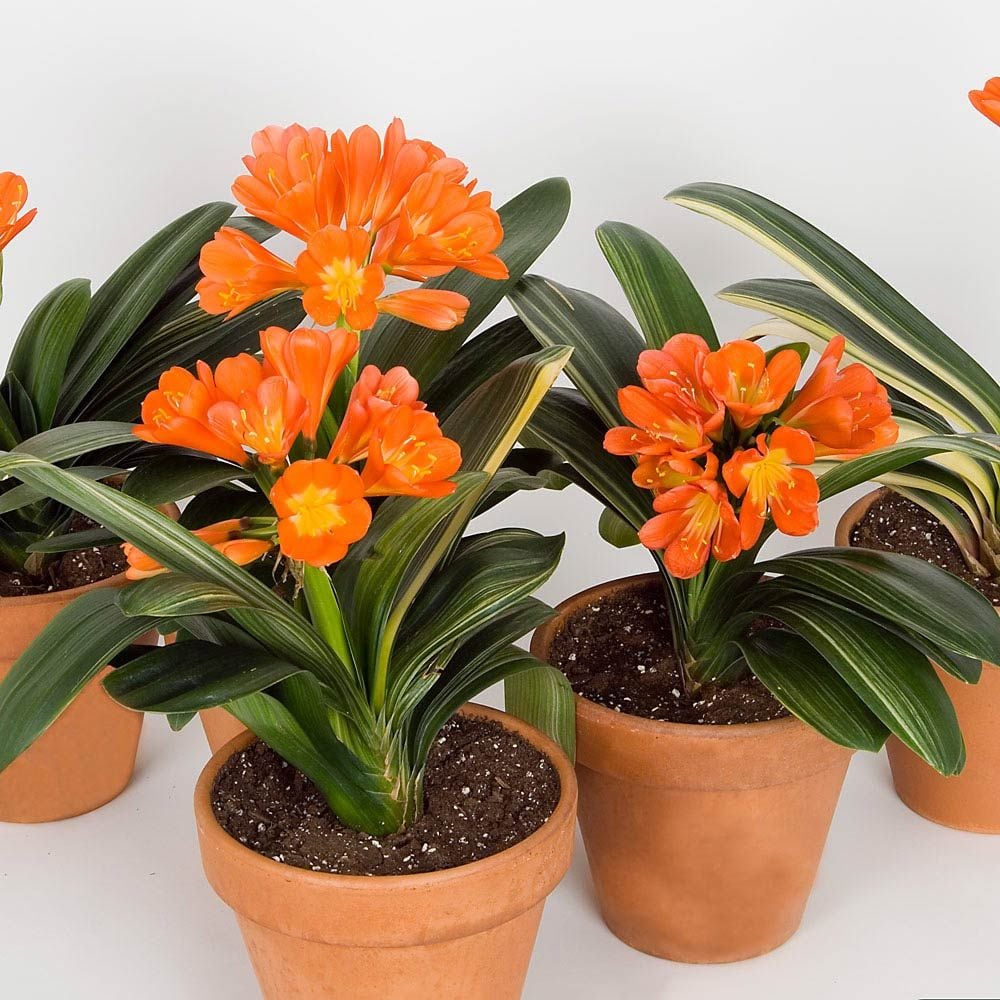
Clivia miniata 'Variegata' White Flower Farm
Natal lily, Clivia miniata, is a fantastic houseplant suitable for a range of indoor situations. It has dark green, strap-shaped leaves, and bears clusters of orange trumpet-shaped blooms with bright yellow anthers, from spring to late-summer. Grow Clivia miniata in containers of houseplant compost in a well-lit situation but out of direct.

Kλίβια (Clivia miniata) Bonanza plants
The Natal lily (Clivia miniata) is a showy, frost-tender house plant that makes a bold feature in the home or conservatory.It bears stocky stems topped with large, rounded heads of colourful flowers, from late winter to spring. Clivia foliage is architectural and attractive year-round, with wide, dark green, strap shaped evergreen leaves that grow from a swollen, fleshy root.

Clivia Lily (Clivia miniata 'Belgian Hybrid') in the Clivias Database
herbaceous, persistent plant. Growth height: 40 to 90 cm. 10 to 20 blossom at each florescence. Blooming period from February to May. elderly plants can bloom at second time in summer or autumn. possible blossom colours: bright yellow to orange coloured, red, pink, crème. dark green, basic, shiny leaves without stipes.
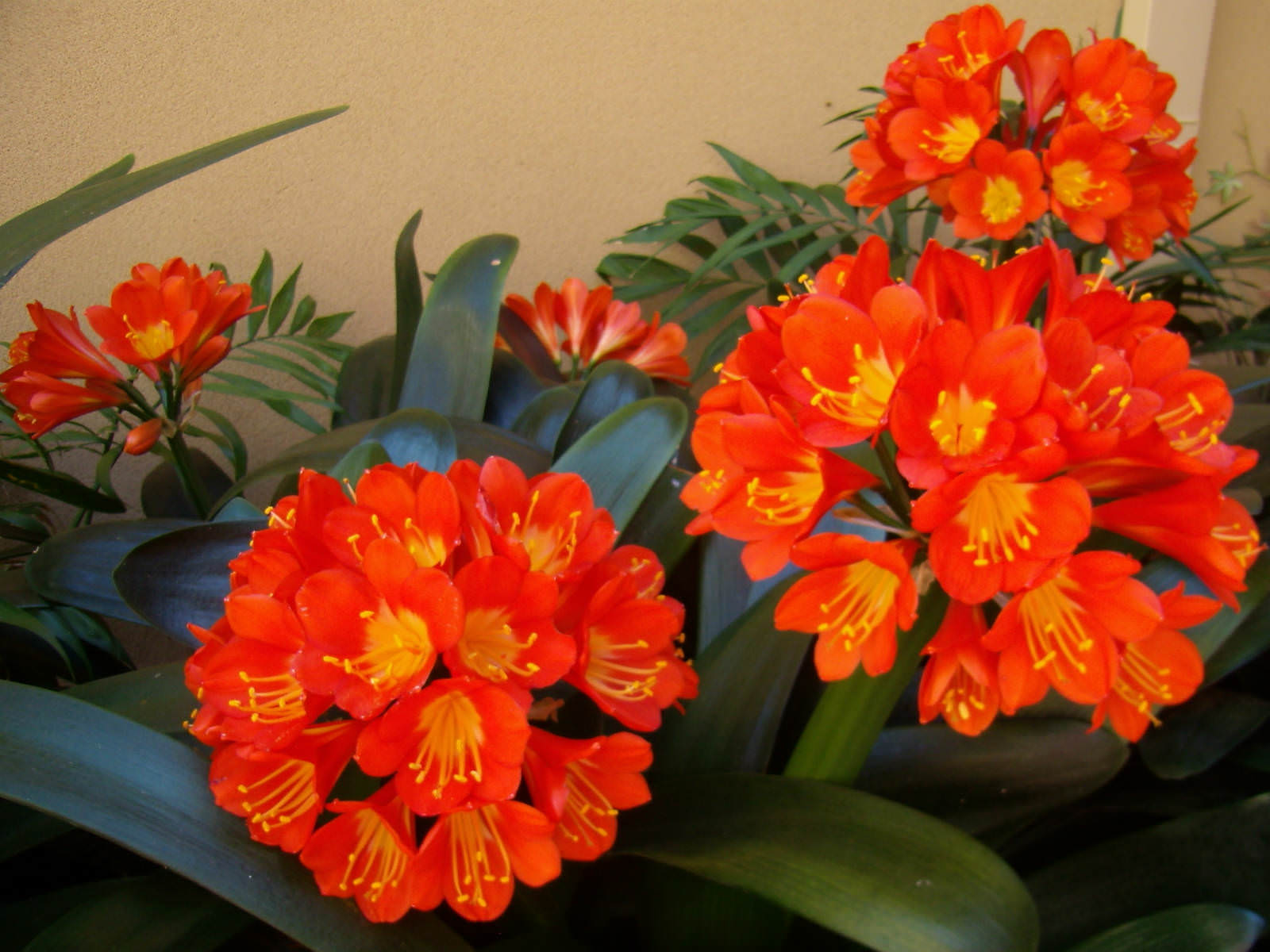
Clivia miniata Kaffir Lily, Orange Clivia World of Flowering Plants
Overview Of Clivia Miniata. The Clivia, also called a Bush Lily or Kaffir Lily, is an easy-care plant that's a pleasure to grow. It's a cousin to the Amaryllis, and despite the common name, is not a real lily. It's named for Charlotte Clive (1787-1866), governess of Queen Victoria.

Clivia Miniata Impressive Plants
C. miniata (1854) C. mirabilis (2002) C. nobilis (1828) C. robusta (2004) The varieties you'll find for sale as houseplants are species plants, hybrids, and cultivars of C. miniata, the most common, and C. nobilis, but all clivias have similar care requirements. Plants grow to a mature height of two to three feet with about the same spread.
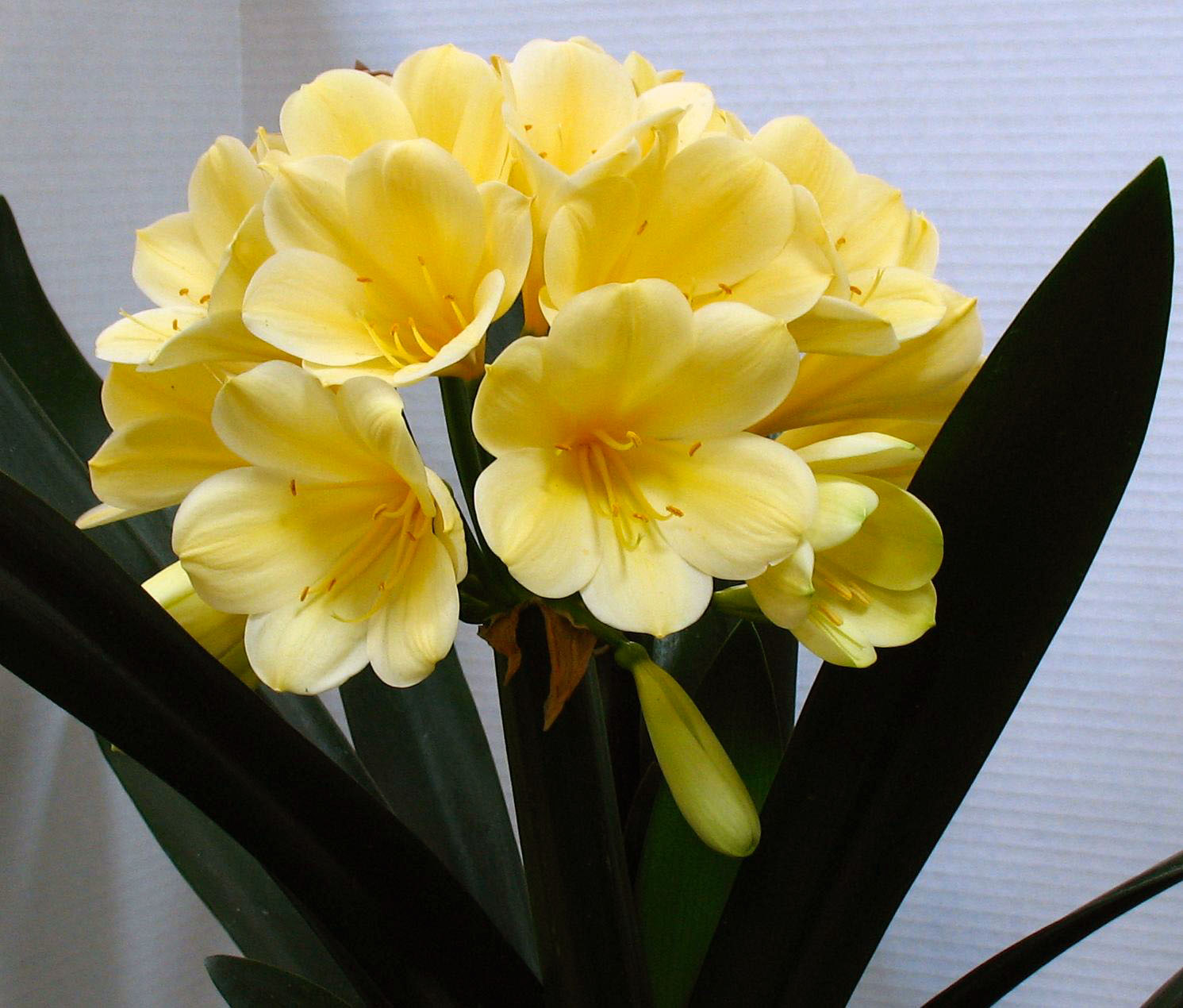
Clivia Miniata 'Cream Form' Gardenwize Nursery
Tips and Tricks. Clivia's active growth period is during early spring to early fall. During this period your plant will need lots of warmth, direct sunlight, water and slow release fertilizer. For instance, Osmocote or a liquid fertilizer at half-strength twice a month. The best conditions will be temps around 70 degrees.
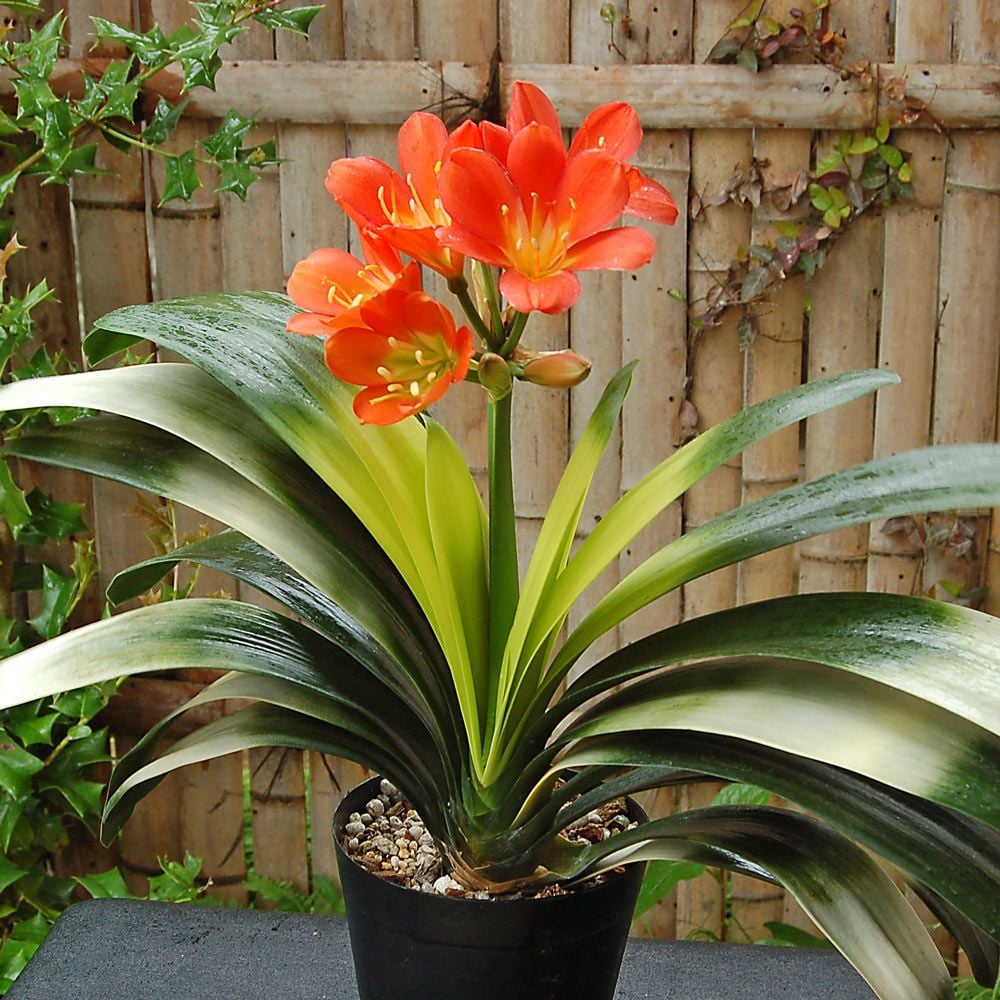
Clivia miniata 'Akebono' in terracotta pot White Flower Farm
Tips for Growing Clivia. Indoor clivias prefer bright, indirect light while those grown outdoors need shade. They also like rich, well-draining potting mix or soilless mix.Clivia is most active from spring through fall, at which time the plant should receive daytime temperatures of 70 degrees F. (21 C.) or more and no less than 50 degrees F. (10 C.) at night.
.jpg)
Clivia miniata
Clivia will develop seeds after the flowers drop. Clip the flower stem off to keep the plant from expending energy on forming seeds. Clivia can be grown from seed, but it takes a long time! The seeds take about a year to ripen and the plant needs to grow for 4 to 5 years to reach a blossoming size. It is much quicker to divide an existing plant.

Garden Adventures Clivia miniata
Breeders at the local, national, and international levels crossbreed different species of Clivia, using C. miniata as the parent plant. These interspecific hybrids are strong growers, resistant to pests and diseases, and produce flowers in unexpected colors, ranging from orange, red, and pink to pastel peach, bronze, and green. The elegant.

CLIVIA Clivia miniata Plantas rioMoros
Clivia miniata is a clump-forming plant with stocky rhizomes. It has long, bright green, strappy leaves and produce strong flower stems topped with heads of large funnel-shaped flowers in shades of yellow, orange and red. Red berries follow flowering. Plants generally take three years to flower. The flowers are long lasting on the plant and can.
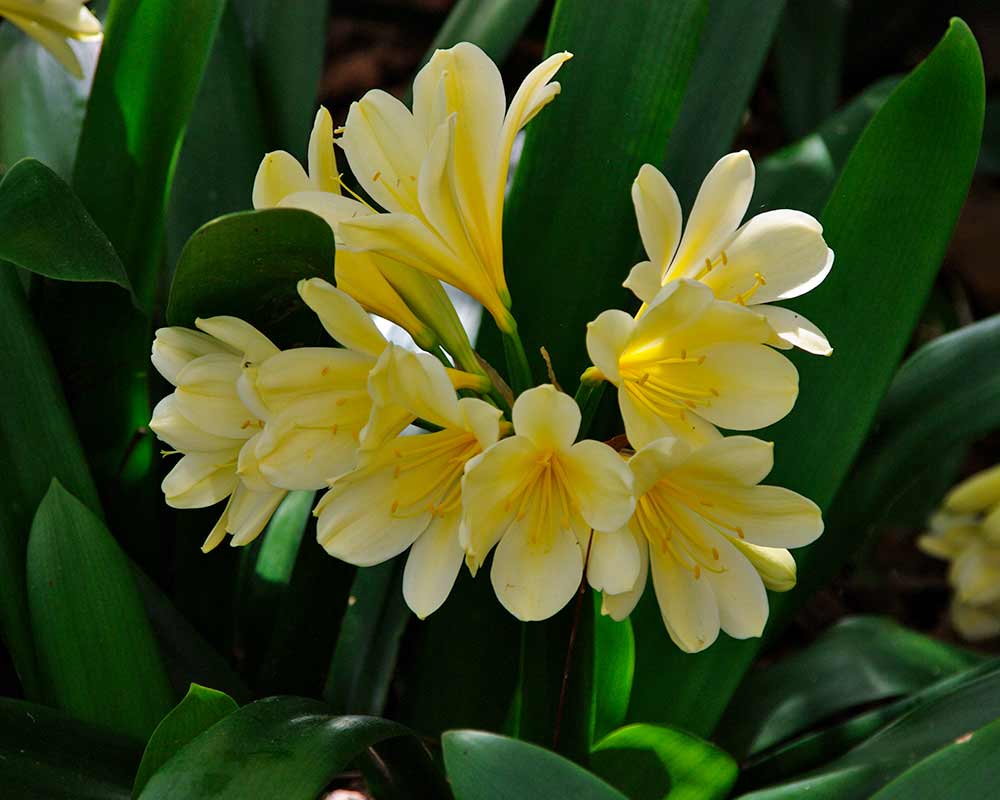
Clivia miniata Yellow
Clivia miniata. ( Lindl.) Verschaff. [1] Clivia miniata, the Natal lily or bush lily, is a species of flowering plant in the genus Clivia of the family Amaryllidaceae, native to woodland habitats [2] in South Africa ( Eastern Cape, Mpumalanga and KwaZulu-Natal provinces) and Eswatini. It is also widely cultivated as an ornamental.
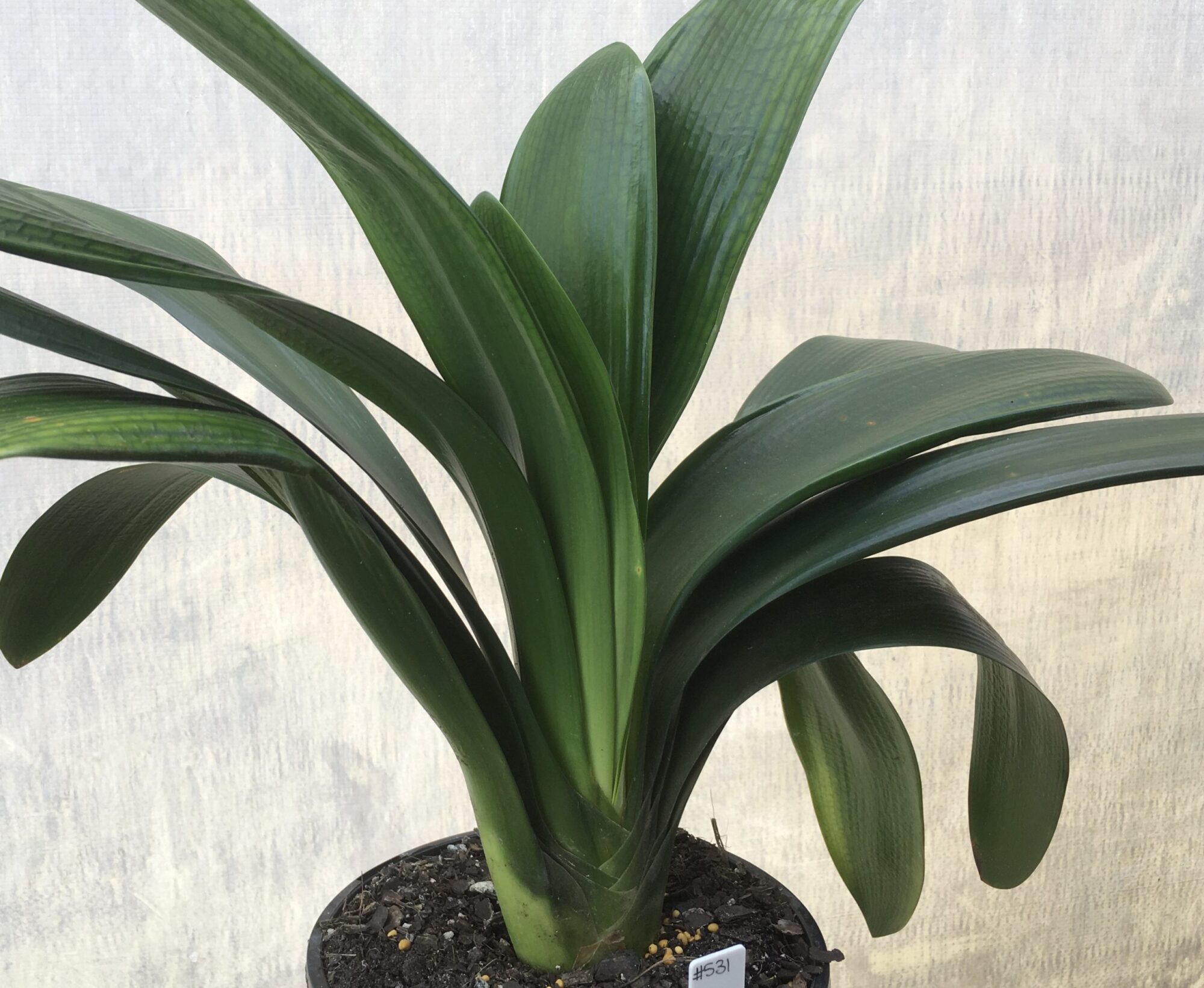
SH531 Broadleaf orange Clivia miniata with leaves 90mm x 400mm Nick's Clivias
Clivia miniata 'Monya' Pronunciation: KLI-vi-a min-i-A-ta. SKU #02760. USDA Zone. 9-11. Good to Grow.indoors: Change Location. Pre-Order for Spring Find In Store. Add To Wishlist. OVERVIEW.. Plant between buildings, on the north side foundation and around the base of an elevated deck. Vivid color among big leaf tropicals and beneath the.
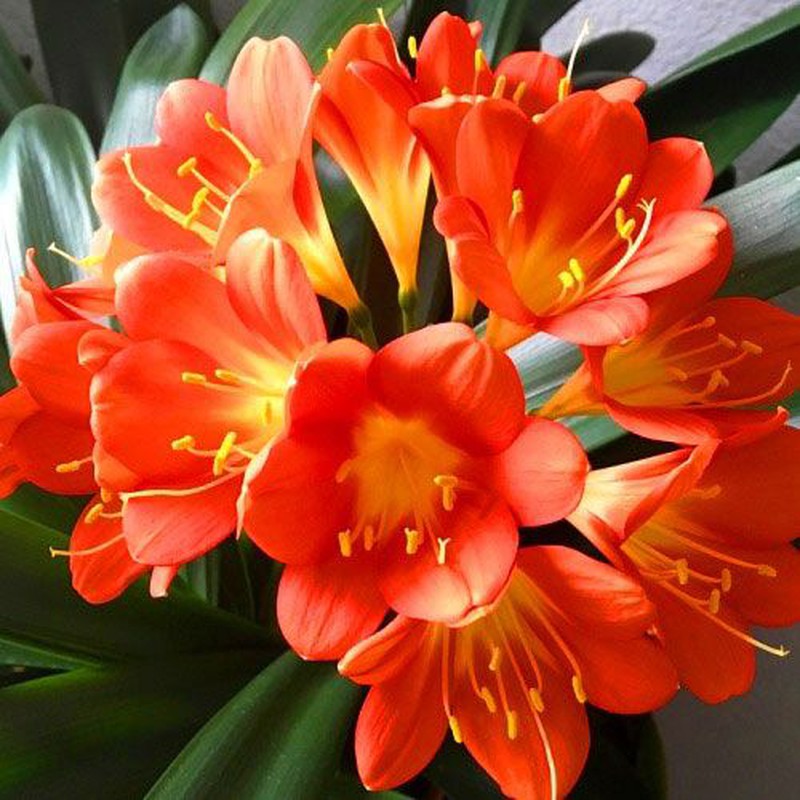
Clivia Miniata —
The Clivia Miniata, also known as Bush Lily, Natal Lily, and Kaffir Lily, is a clump-forming flowering plant that originates from the woodlands of South Africa and Eswatini. The plant has a history of being cultivated for over two centuries in various regions. It has since been introduced to the United States.
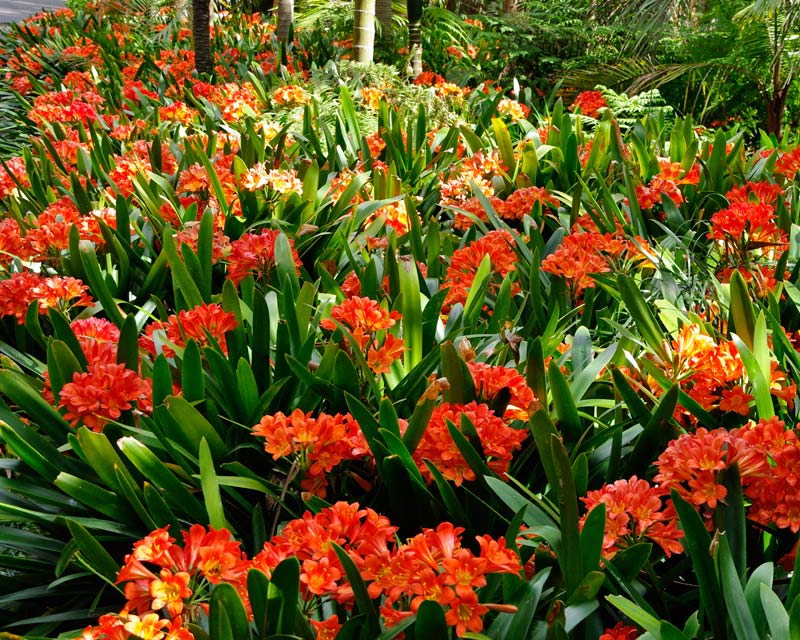
Clivia miniata
Make sure your Clivia miniata is well sheltered. The plant likes warmth when it's in the active growing phase but needs a rest period during winter (about 2 months). During this time, they should be kept around a temperature of 10°Celsius. If the temperature is too warm, the flowers might not last as long.
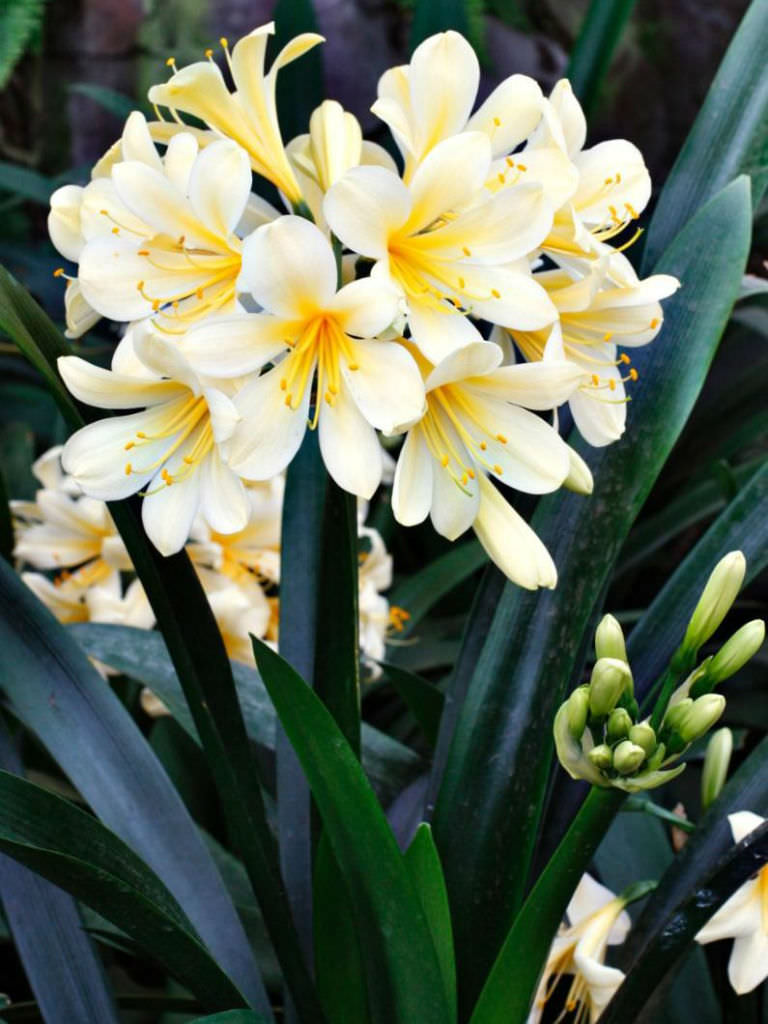
Clivia miniata var. citrina (Yellow Clivia) World of Flowering Plants
Buy Plants. Prized for its brilliant flowers, Clivia miniata (Natal Lily) is an elegant rhizomatous evergreen perennial boasting large clusters of 15-20 funnel-shaped, orange-red flowers from early winter to mid-spring. The blossoms, 2.5 in. long (7 cm), are adorned with contrasting yellow throats. They are borne atop erect, thick stems above.